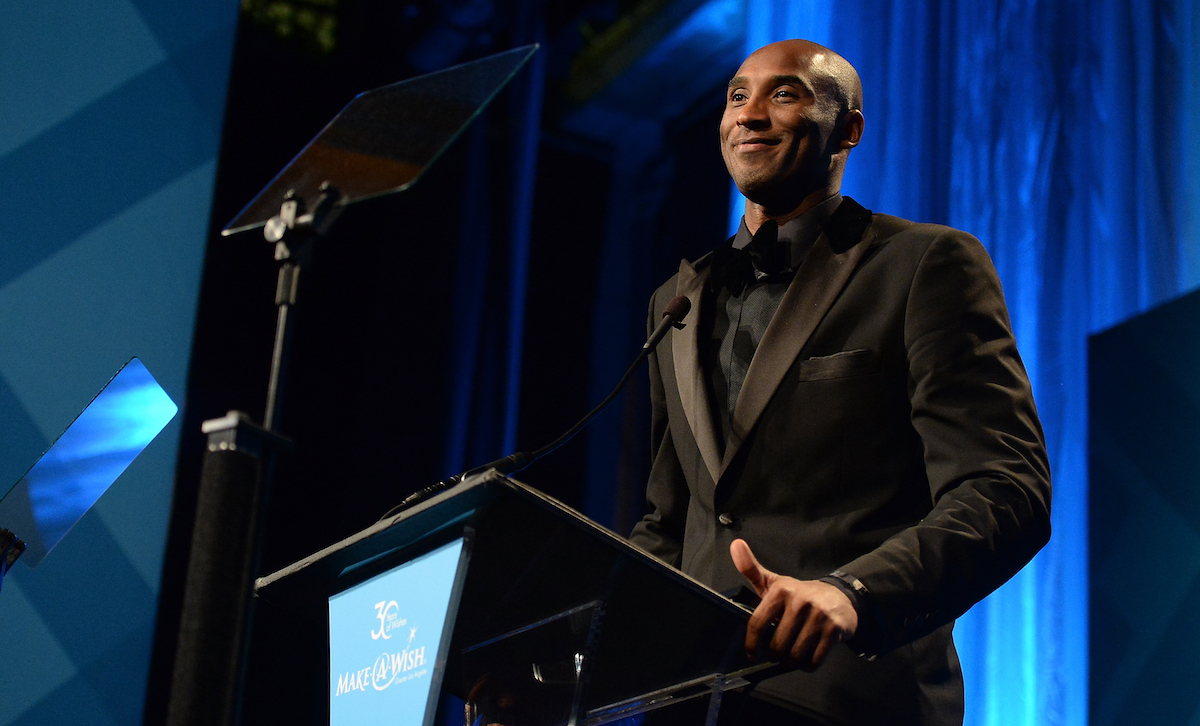The pilot in the January 2020 helicopter disaster that killed nine people, including Kobe Bryant and his daughter Gianna, appeared to violate federal flight standards when he flew through clouds northwest of Los Angeles before crashing on a hillside, federal safety investigators say.
Investigators said the pilot's decision to fly in those conditions under visual flight rules without relying on instruments resulted in spatial disorientation as the likely cause of the Jan. 26, 2020 crash above hillside terrain on the flight from Orange County to Camarillo. Much of the National Transportation Safety Board's four-hour hearing Tuesday to determine the cause focused on the pilot's actions, weather conditions and a series of decisions that members said ignored training and violated federal regulations during the 40-minute flight.
The result of those decisions was a flight through thick clouds that triggered the pilot's disorientation and led to a loss of control, investigators said.
We’re talking about spatial disorientation where literally the pilot may not know which way is up or down, whether he or she is leaning left or right.
Robert L. Sumwalt, NTSB board chair
“We’re talking about spatial disorientation where literally the pilot may not know which way is up or down, whether he or she is leaning left or right,” board chair Robert L. Sumwalt said.
Also known as the leans, spatial disorientation occurs in the inner ear. It causes pilots to believe they are flying aircraft straight and level when they're actually banking.
The crash on a foggy morning northwest of Los Angeles led to worldwide grief for the retired basketball star, launched several lawsuits and prompted state and federal legislation. The eight passengers were flying from Orange County to a youth basketball tournament at his Mamba Sports Academy in Ventura County on Jan. 26, 2020, when the helicopter crashed on a hillside.
Pilot Ara Zobaya climbed sharply and had nearly broken through the clouds when the Sikorsky S-76 helicopter banked abruptly and plunged into the Calabasas hills below, killing all nine aboard instantly before flames engulfed the wreckage.
During Tuesday's hearing, investigators said the pilot appeared to violate flight standards and likely became disoriented in the clouds. Zobaya was flying under visual flight rules, which means he needed to be able to see where he was going, investigators said.
"We have seen this accident before, unfortunately," said board member Michael Graham. "Helicopters continue the VFR flight into meteorological conditions and unfortunately lose control of the aircraft due to spatial disorientation."
Sumwalt said the NTSB's discussion was "at the juncture of 'human' and 'environment.'"
"He was flying under visual flight rules (VFR), which legally prohibited him from penetrating clouds," Sumwalt said. "However, he continued this VFR flight through the clouds, into instrument meteorological conditions."
The helicopter did not have the so-called "black box" recording devices, which were not required.
The helicopter's previous owner regularly operated it with two pilots, the chairman said. There was no mandate for Island Express Helicopters to have two pilots, but Sumwalt said that two sets of trained eyes might have prevented the tragedy.
The board members criticized Island Express Helicopters Inc. for inadequate review and oversight of safety issues.
A lawyer for Island Express Helicopters could not be immediately reached for comment on Tuesday.
There was no sign of mechanical failure, and it was believed to be an accident, the National Transportation Safety Board has said. The board is likely to make nonbinding recommendations to prevent future crashes when it meets remotely Tuesday.
Federal investigators said Zobayan, an experienced pilot who often flew Bryant, may have "misperceived" the angles at which he was descending and banking, which can occur when a pilot becomes disoriented in low visibility, according to NTSB documents.
Investigators discussed whether Zobayan placed himself under self-induced pressure to complete the journey because of his longtime relationship with Bryant. Investigators said there was no evidence that Bryant or anyone else pressured Zobayan to finish the trip in the face of adverse weather.
The NTSB is an independent federal agency that investigates crashes but has no enforcement powers. It can only submit suggestions to bodies like the Federal Aviation Administration or the Coast Guard, which have repeatedly rejected some of the board’s safety recommendations after other disasters.
The five-member board recommended that Safety Management Systems be required for all Part 135 flights -- commercial, non-scheduled aircraft operations such as private air charter and air taxi flights. The FAA does not require SMS -- a comprehensive system of assessing risk -- for companies such as Island Express, but does encourage it.
"We need redundancy in the system so when somebody does make a bad mistake or commit an error there's enough redundancy in the system to be able to trap those errors before they become consequential,'' Sumwalt said.
"Although the company used SMS tools, it did not implement the entire program and performed safety assurance evaluation such as those that could have assured the effectiveness of the flight risk analysis,'' the NTSB's report said. "... Although the company had SMS, our investigation showed that they did not effectively develop and implement the entire program.''
Pictures: These are the Victims in the Kobe Bryant Helicopter Crash
The crash killed a group of people brought together by a love of sports. They included Orange Coast College baseball coach John Altobelli, his wife, Keri, and their daughter Alyssa; Christina Mauser, who helped Bryant coach his daughter’s basketball team; and Sarah Chester and her daughter Payton. Alyssa and Payton were Gianna’s teammates.
In the year since the helicopter crash, there’s been plenty of finger-pointing over the cause of the tragedy.
Bryant’s widow blamed the pilot. She and families of other victims also faulted the companies that owned and operated the helicopter. The brother of the pilot didn’t blame Bryant but said he knew the risks of flying. The helicopter companies said the weather was an act of God and blamed air traffic controllers.
On the day a massive memorial service was held at the Staples Center, where Bryant played most of his career, Vanessa Bryant sued Zobayan and the companies that owned and operated the helicopter for negligence and the wrongful deaths of her husband and daughter. Families of other victims sued the helicopter companies but not the pilot.
Vanessa Bryant said Island Express Helicopters Inc., which operated the aircraft, and its owner, Island Express Holding Corp., did not properly train or supervise Zobayan. She said the pilot was careless and negligent to fly in fog and should have aborted the flight.
Zobayan’s brother said Kobe Bryant knew the risks of flying in a helicopter and his survivors aren’t entitled to damages from the pilot’s estate. Island Express Helicopters Inc. denied responsibility and said the crash was “an act of God” it couldn’t control.
It also countersued two FAA air traffic controllers, saying the crash was caused by their “series of erroneous acts and/or omissions.”
The countersuit claims one controller improperly denied Zobayan’s request for “flight following,” or radar assistance as he proceeded in the fog. Officials have said the controller terminated service because radar couldn’t be maintained at the altitude the aircraft was flying.
According to the lawsuit, the controller said he was going to lose radar and communications shortly, but radar contact was not lost. When a second controller took over, the lawsuit said the first controller failed to brief him about the helicopter, and because the radar services were not terminated correctly, the pilot was under the belief he was being tracked.
Vanessa Bryant also sued the Los Angeles County Sheriff’s Department, accusing deputies of sharing unauthorized of the crash site. California now has a state law prohibiting such conduct.
Last month, Rep. Brad Sherman, D-Sherman Oaks, and Sen. Dianne Feinstein, D-California, announced proposed legislation that would require the installation of Terrain Avoidance Warning Systems on all helicopters carrying six or more passengers.
The NTSB has been recommending such a requirement for 15 years, but the Federal Aviation Administration requires only air ambulances to be outfitted with the system.
However, NTSB investigators said Tuesday that TAWS would not have prevented the Calabasas crash, since Zobayan was aware of the terrain.



